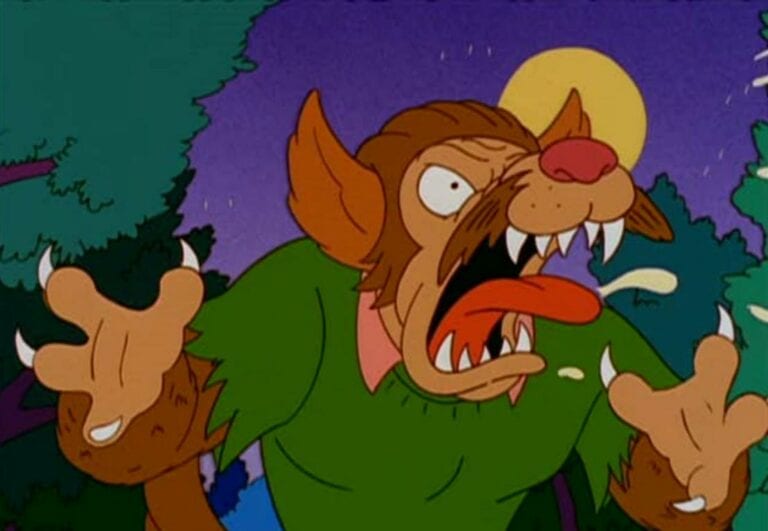In 1999, the Simpsons released the tenth installment of their well-lauded Halloween series, “Treehouse of Horror.” It features a number of incredibly timely segments that reference everything from Xena: Warrior Princess to the (at the time) impending Y2K crisis. Although the writing hasn’t yet grown stale, the episode certainly feels like a product of its time.
The first segment of the episode, however, strikes a different chord. Titled “I Know What You Diddily-Iddily-Did,” it is a very direct parody of the 1997 cult classic I Know What You Did Last Summer. Despite that, though, the jokes feel just as relevant today as they did back then.
That’s because the goofy mini-episode does more than just poke at the slasher. “I Know What You Diddily-Iddily-Did” takes on several more general horror tropes that apply to the entire genre rather than just that one film. Even if you’re not familiar with the source material, the jokes are bound to make sense to you.
Before I get into the tropes that “I Know What You Diddily-Iddily-Did” is tackling, though, let’s get into a quick summary of the segment itself to set the scene.
Summary of “I Know What You Diddily-Iddily-Did”
For the most part, this segment does a faithful job of recreating I Know What You Did Last Summer in the context of Springfield. After a quick opening from Kang and Kodos, “I Know What You Diddily-Iddily-Did” cuts to the Simpsons family driving their car through dense fog. After Homer admits that he forgot to put the foglights in, Marge accidentally hits something with her car.
Unsure of what it was that they collided with, the family gets out to look. To their shock, it’s Ned Flanders, their goody-two-shoes neighbor. Thinking that no one saw the accident, the family agrees to keep the whole thing a secret and try to make it seem like Ned died of natural causes.
That brings us to Homer attempting to fake Ned’s death to give them a credible excuse. He starts by dragging the lifeless corpse and throwing it off of the roof in front of Ned’s wife, Maude. To Homer’s frustration, Maude turns away just as he tosses Ned’s body down two stories. Not wanting to overcomplicate things, Homer walks into Ned’s house and throws him in.
A funeral is held, and Homer’s slowly mounting nervousness over getting caught is evident by his erratic behavior while giving a speech. The entire family begins to struggle with their guilt over the situation, thinking that everyone suspects them. This is seemingly confirmed when they return to their home to see that someone wrote “I know what you did” in blood on their front door.
The Simpsons have unwittingly become murderers, and someone knows about it. While sitting in their homes, a lightning flash reveals even more writing, and a shadowy assailant appears. They flee, but their car breaks down, and the man catches up to them. And who is it that knows their deep, dark secret? None other than Ned Flanders, of course.
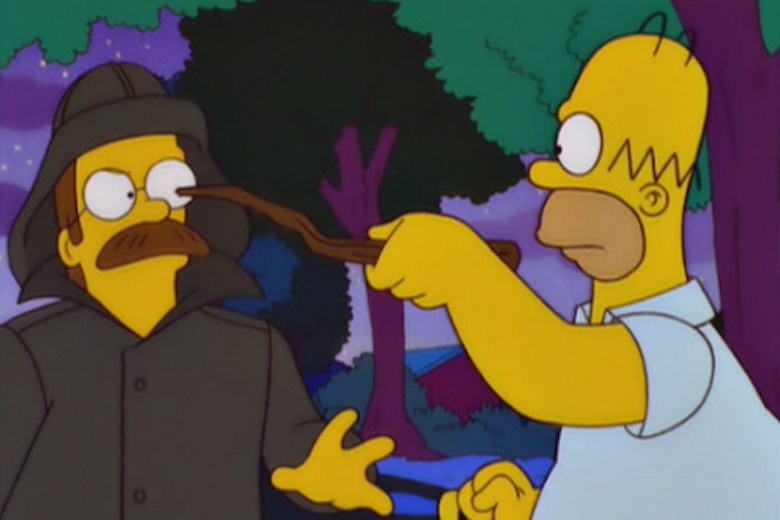
But wait, isn’t he supposed to be dead? Well, yeah, but as Ned wisely notes, “You can’t kill the undead.” And no, he doesn’t turn out to be a zombie that eats the entire family. Instead, he turns into a werewolf to finish off Homer while the rest of the family gets away.
Trope 1 – Werewolves
Wait, a werewolf? That doesn’t happen in I Know What You Did Last Summer, does it? Well, no, but it seems fitting when you consider “I Know What You Diddily-Iddily-Did” a parody of the horror genre as a whole rather than just a spoof on that singular film. What better way to re-up the tension than to introduce a werewolf? The creature is, after all, one of the longest-lasting myths in all of horror.
It’s hard to say when the myth of the werewolf was first introduced, but it’s generally thought that stories about man-wolf hybrids date back a few thousand years. The Epic of Gilgamesh even has a story about one, and one could even argue that Enkidu and other mythological characters resemble werewolves.
As far as the modern interpretation of the werewolf goes, that hardly needs an introduction. Some of the earliest horror movies featured werewolves, and the monster was incredibly common in cinema around the 30s and 40s. The Werewolf of London arguably established the creature as one of horror’s touchstones, and it has remained a reliable source of screams ever since. Whether you want pure horror or campy laughs, the werewolf will provide.
But why is it that the werewolf is such an important horror character? There are plenty of different opinions. Some think that it needn’t be more complicated than the fact that the idea of a man mixed with a wolf is just inherently scary. Big teeth, big claws, and a big body. Yeah, that checks all of the boxes.
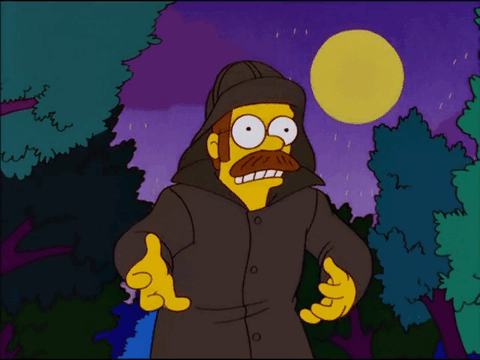
There are other theories, however, that suggest a deeper meaning behind our obsessions with werewolves. The relationship between humans and wolves is an ancient and occasionally tenuous one. As one of the most prominent examples of animals being tamed, wolves represent the wild heart of nature that humans inherently want to control.
Werewolves, therefore, play upon a subconscious fear that we all have: that there is only a thin line separating man from beast, and that any of us could become slaves to our instincts at any moment. Hmm, and that may explain why werewolves are equally popular in the romance genre…
Regardless of why we love those dang werewolves, we do. And that’s why Ned’s transformation fits so well into this “Treehouse of Horror” segment. And the irony behind Perf-Diddily-Erfect Flanders succumbing to the bloodlust of the beast within isn’t lost on anyone.
Trope 2 – The Predictability of Horror
To explain this trope, let’s start from the end. Flanders being the terrifying maniac that chases the Simpsons is presented as a twist. It’s a good one, yet everyone knew that it was coming. Who else was it going to be? No other character would have made any sense. It feels very predictable. Is this just a case of lazy writing? Yeah, kinda. But it’s lazy to mirror the laziness of horror writing that can be found all over the genre.
Before any horror fans put on their Jason Voorhees masks and come after me with chainsaws, understand that I don’t mean this as a fault. Yes, horror is often predictable, but that’s something that we all love about it. We all appreciate the darkness and grittiness in our favorite flicks, but we also appreciate the funny moments that make us roll our eyes.
Most slasher movies follow similar plots: the young teens get together, uncover some terrifying secret, and then have to deal with a killer while slowly being picked off, one-by-one. This strong sense of convention allows viewers to pick up on the slight differences that are present in the writing, making inventive ideas even more powerful than normal.
Plus, horror movies are a lot like rollercoasters. Sure, you might be able to see that you’re about to plunge directly downwards, but that doesn’t make it any less fun. In fact, it’s been posited that horror movies resonate with us so much thanks (in part) to their predictability.
This moment at the end of “I Know What You Diddily-Iddily-Did” isn’t the only reference to the predictability of horror. The very beginning of the part is another great example. The Simpsons are driving through thick fog, a classically lazy way of creating suspense and uncertainty in horror. As soon as we see the fog, we just know that something bad is going to happen.
But my personal favorite instance of this episode spoofing horror’s uniformity is in a line from Homer. As they are seemingly cornered by their tenebrous attacker, Lisa shouts that he’s getting closer. Homer, struck with inspiration, comes up with a bright idea for them to all escape to safety.
“Okay, Marge, you hide in the abandoned amusement park; Lisa, the pet cemetery; Bart, spooky roller disco; and I’ll go skinny dipping in that lake where the sexy teens were killed a hundred years ago tonight.”
Ah, perfect.
Trope 3 – The Power of Guilt
While this segment may be a direct satire of I Know What You Did, there are only a few scenes that feel like obvious mirrors of the original film. Aside from the chase scene at the end, most of these are the shots that feature the infamous “I know what you did” writing. Interestingly enough, these scenes aren’t really as funny as some of the others. They do a good job of maintaining the creepiness of I Know What You Did.
The use of these scenes, as well as the original movie that they are based on, are playing upon the common horror trope of the power of guilt. While it may not be as easily recognizable as, say, a werewolf, this is one that any horror fan will feel very familiar with.
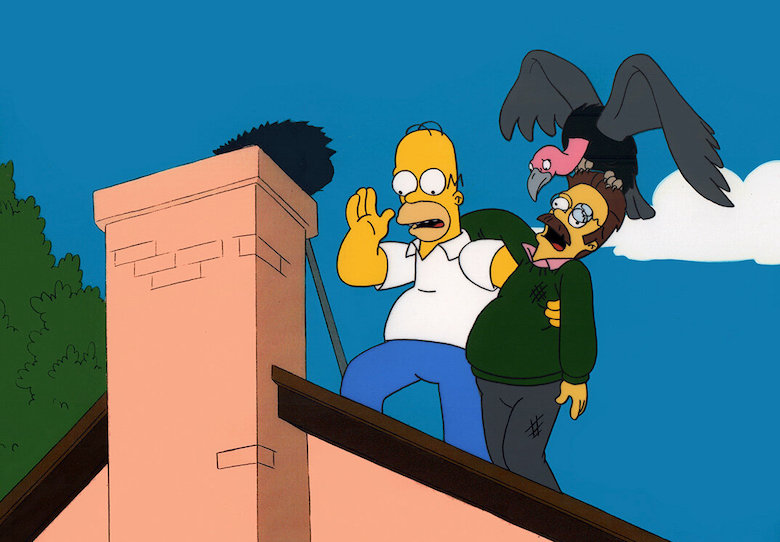
I Know What You Did Last Summer isn’t the most artful film ever made, but it does an excellent job of ratcheting up the tension by turning the characters’ guilt into a tangible thing. The fear that they have might be of a real killer tracking them down, but it also may as well just be something that they are manufacturing in their own heads thanks to the extreme regret they feel.
This is seen all over in a variety of different horror movies, but recent films that seek to mold pop horror standards with arthouse themes do a great job of exploring the power of guilt. Hereditary, for instance, dives deep into what guilt can do to someone’s psychology. Other examples like The Vigil use many of the same devices to get to the same point.
— FOUNDATIONS OF HORROR —
Further explore these subgenres & tropes. more>>
#Lycanthrope horror | #Revenge is Sweet | #Comedy horror | #The Simpsons
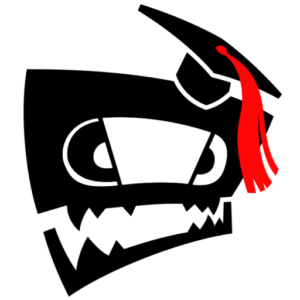
But, like many of the horror tropes parodied in “Treehouse of Horror,” this one isn’t just relegated to modern films. No, the grip that guilt can have on us is one of the most common themes you can come across in horror literature dating back hundreds of years. Guilt is an even more powerful demon than the monster itself in Mary Shelley’s Frankenstein, and nothing is more central to Poe’s The Tell-Tale Heart than guilt.
When you know that you’ve done something wrong, you begin to hate yourself and think that everyone around you suspects you. Luckily, this is The Simpsons we’re talking about. Sure, a laundry list of characters may be giving the family dirty looks, but Homer still manages to muster up a cheerful “Yello?” when the phone rings afterwards.
On the surface, a cartoon parody of I Know What You Did Last Summer doesn’t sound particularly interesting. But The Simpsons manages to make it captivating by thinking beyond the source material and looking deep into the tropes that make horror unique. Yes, they’re making fun of horror, but it comes from a place of deep reverence for the genre. For me, that distinction is what makes “Treehouse of Horror” such a remarkable series.
Last Updated on October 6, 2021.

